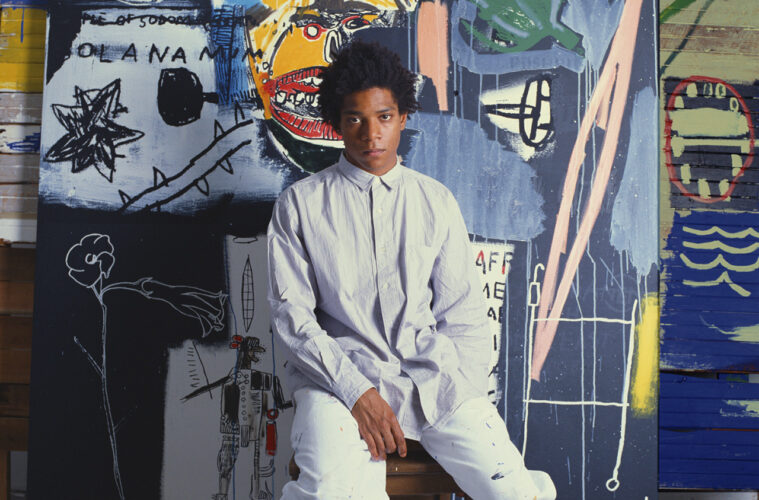One thing about the Basquiat: King Pleasure exhibition newly opened in downtown, is that it’s very much a family affair. It was organized by Jean-Michel’s sisters, Jeanine Heriveaux and Lisane Basquiat, with the support of their stepmother, Nora Fitzpatrick, drawn from their father’s and the whole family’s personal collection of art, ephemera, albums, artifacts and home movies, all under the aegis of The Estate of Jean-Michel Basquiat. Even extensive documentary videos and interviews installed throughout the exhibition spaces were directed by his niece, Sophia Loren Heriveaux. At one point, rooms from the Basquiat family home are not only recreated with faithful detail, but are actually made of the original furnishings — in storage since their father’s death in 2013.
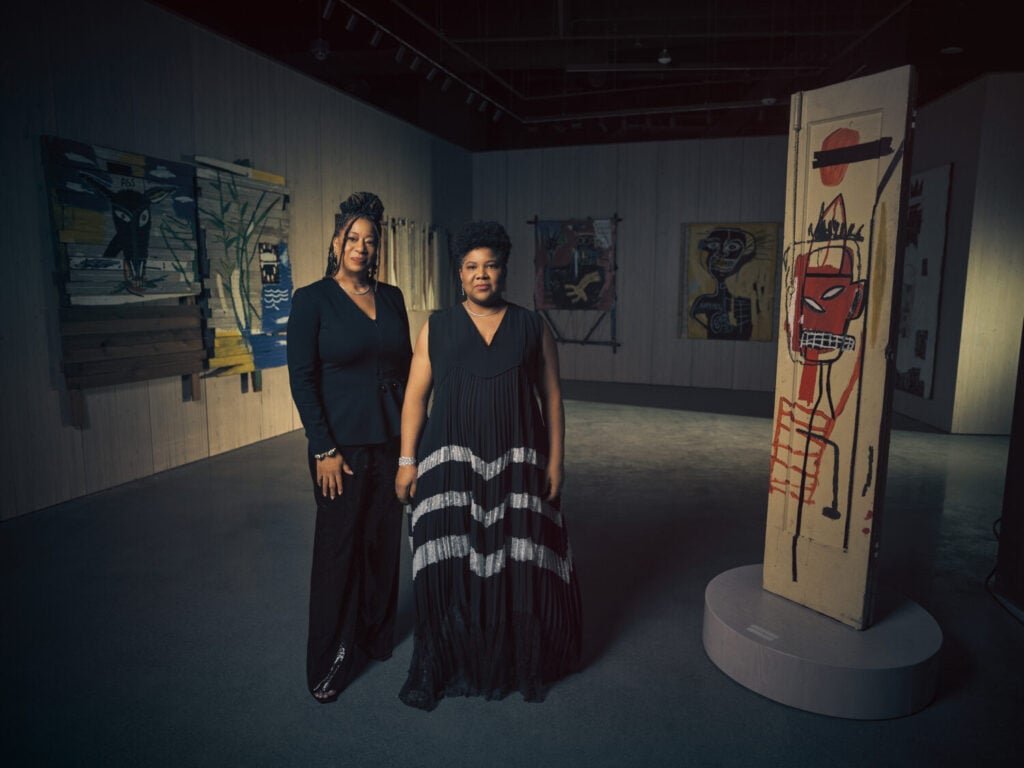
Lisane Basquiat and Jeanine Heriveaux (Photo by Kurt Iswarienko)
In fact, it was the father’s passing that prompted the idea that would eventually become the exhibition. “When our father passed away in 2013, it was like, OK, let’s figure this thing out,” Heriveaux tells L.A. Weekly. “Which we’ve done, and very successfully, I’d say. And then through conversation with our stepmother, Nora, we started thinking about what it could really become. We wanted to make sure that we did something that we could self-fund, that we could executive produce, and where we, the family, could own the narrative.”
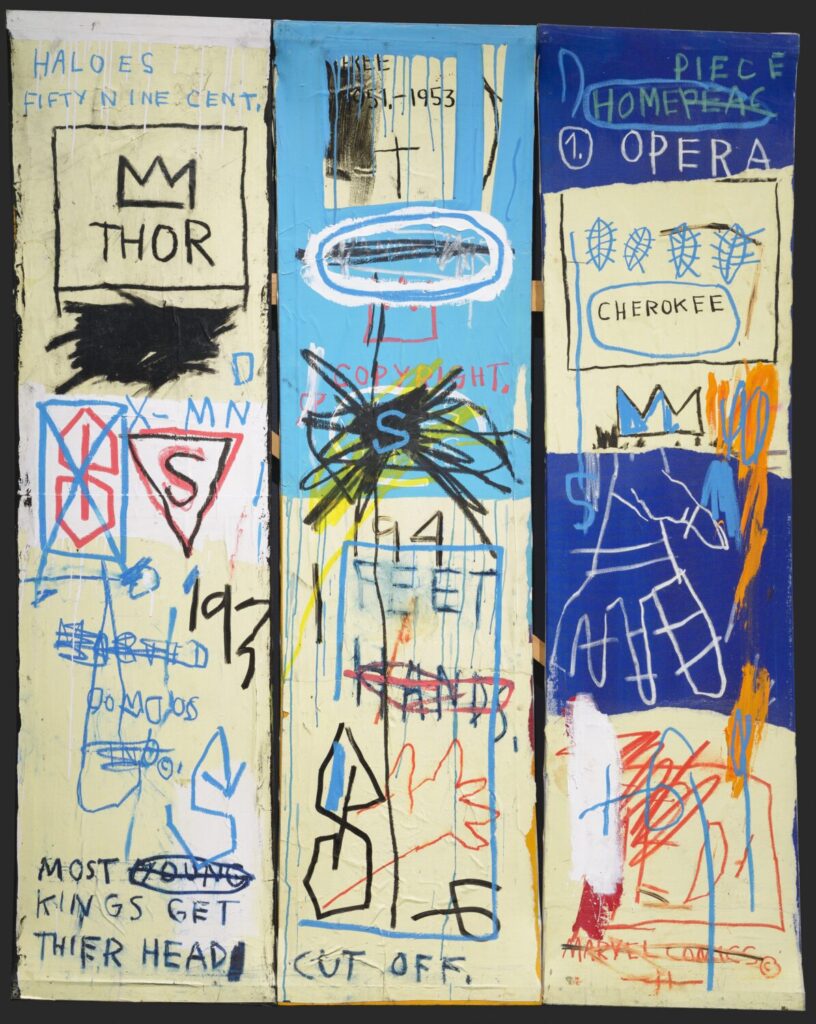
Charles the First, 1982 (© The Estate of Jean-Michel Basquiat, Licensed by Artestar, New York)
And about that narrative. Speaking to Heriveaux and Basquiat, it becomes clear that this exhibition, while intimate, is not salacious. While in a sense, it’s about the Basquiat “you’ve never seen before,” it is not about family secrets. If anything, the show exists to counter dominant narratives of Jean-Michel as an estranged artist, rejected by his parents, in a self-involved celebrity spiral. “It was like, you have this huge, big, bold life,” says Jeanine. “And all of that was true, but we thought about what we could do to bring that down into a fuller story of the trajectory of his early life and then of his career. If you want to know about Jean-Michel, we’re picking things out of our own collections to show you who Jean-Michel actually was. So we don’t have to say, let us tell you about who Jean-Michel was, but, rather, let you see.”
“I think we’re looking at it from a different perspective,” says Lisane. “You know, we’re not scholars or curators in the standard sense. We are going to tell the story of Jean-Michel as a complete, complex human being, rather than only as a famous artist.” It may not be juicy, they say, but it is what has been missing.
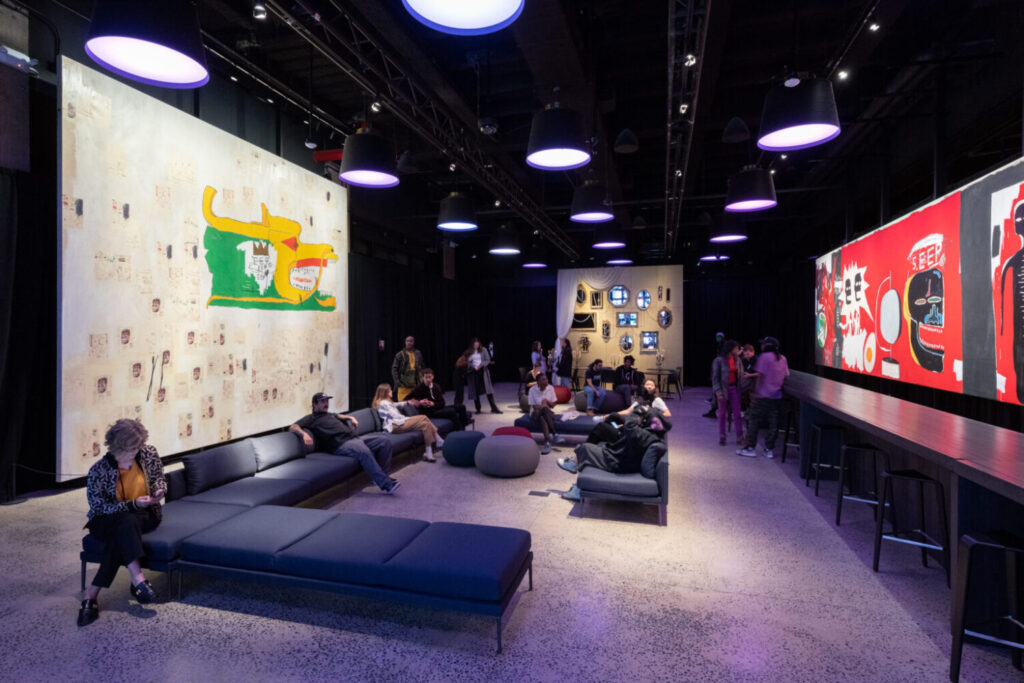
Installation view of Basquiat: King Pleasure (Photo by Salemi)
“And I think that everyone who has told or shared their stories of Jean-Michel has done that from their perspective, and so there are people who would party and go to the clubs,” adds Jeanine. “And that’s accurate. But he had a huge heart, just a huge heart. He was very sensitive, he was able to have conversations with people at a deeper level, which is rare.”
The exhibition occupies five ground-floor retail spaces at the freshly opened Frank Gehry-designed Grand L.A. in downtown, directly across from Disney Hall, in a transformative reconfiguration of the New York iteration designed by acclaimed Ghanaian-British architect David Adjaye. In five distinct sections, each with its own character and evocative warmth, audiences encounter the works grouped not merely chronologically, but also by theme. Sections on early life feature charming home movies of Basquiat and his sisters as children, loads of family photos, the aforementioned kitchen and living room recreations, and more details on his art world adventures in Manhattan. The obvious familial affection, the portraits of his sisters and parents by Andy Warhol made during his career, and the extensive holdings of works and process materials from every period give the lie to tales of estrangement and indifference.
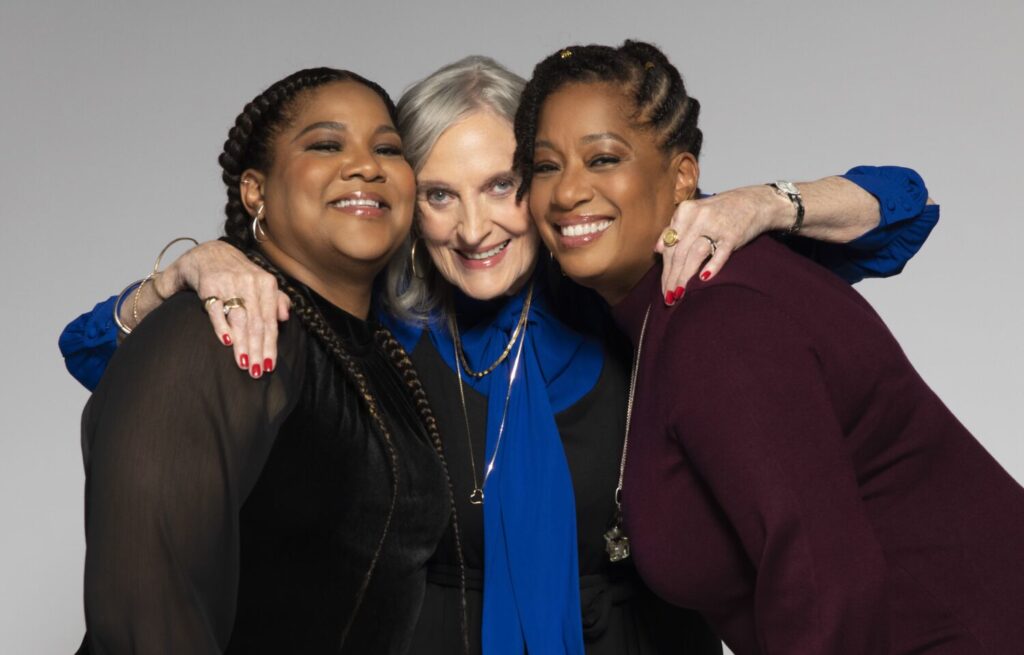
Jeanine Heriveaux, Nora Fitzpatrick, and Lisane Basquiat (Photo by Miranda Penn Turin)
Further galleries address the heights of Basquiat’s career through, for example, a survey of powerful works honoring Black cultural royalty like Charlie Parker and Jesse Owens, a fabulously bohemian and chaotic recreation of his Great Jones St. studio in NYC complete with contemporaneous soundtrack, a full-scale reconstruction of the Michael Todd VIP Room of legendary NYC nightclub Palladium, for which Jean-Michel created two large scale paintings never before exhibited outside the club, until now — and of course, a number of seminal works made in and about Los Angeles.
Across these five very distinct galleries and their lively crosscurrents of eras, the guiding principle of the presentation is contextualization. With the primary source materials and extensive video content, this exhibition doesn’t try to compete with the plethora of Basquiat shows and properties already out in the world — but rather, to meaningfully add their family’s unique, lived experiences and memories as discursive context to the popular mythology.
“I think what we’re trying to do is really give a fuller picture of who Jean-Michel was as a person, as an artist, and as a member of this community,” says Jeanine. “It’s not just about the prices of his paintings or his place in the art world, but about the impact he had on the people around him and the world at large.”
“And I think that’s really important because often when we talk about artists, we focus so much on their work and their achievements that we forget about the person behind the work. And Jean-Michel was such an interesting and complex person with a rich life beyond his art,” adds Lisane. And for extended periods in 1982-1984, that richness and complexity unfolded here in Los Angeles.
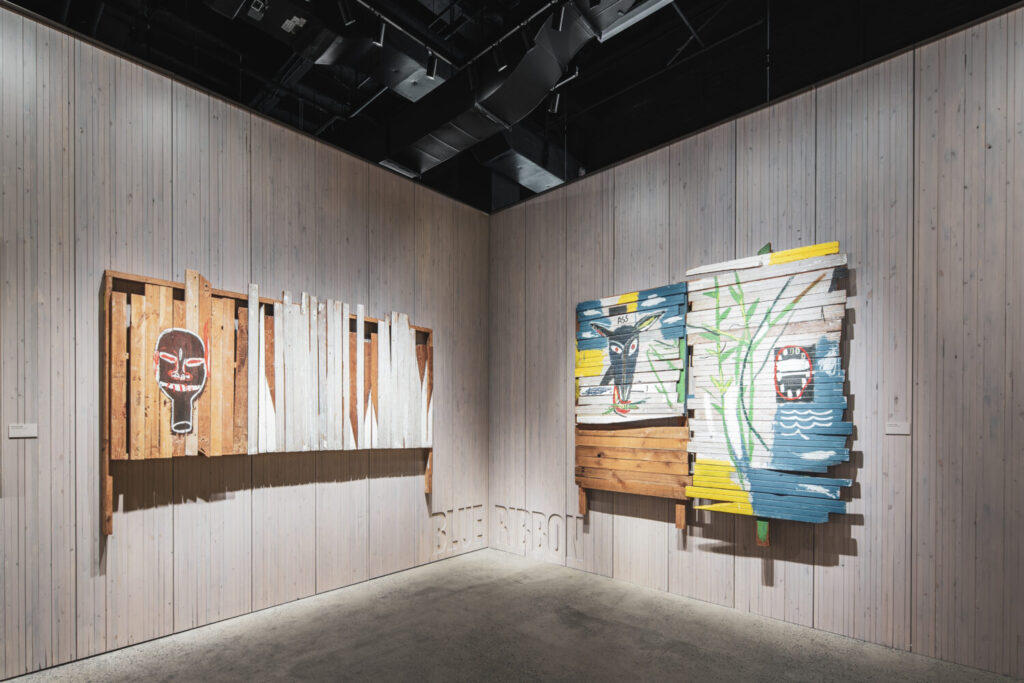
Jean-Michel Basquiat: Fence paintings, circa 1983
“Being his sisters, we knew that he came out here. We knew that he spent time here creating, especially certain works,” says Lisane. “You know there’s a story: him staying in an apartment and he was in the backyard when someone stumbled into the space where he was. He was startled by someone on the sidewalk outside, did not like being unable to see who was outside the yard before he left, and he asked for the fence to be taken down, and that fence is what he used to create some really great work.” That was Larry Gagosian’s house, in Venice, and Gagosian’s fence that got dismantled and repurposed, probably without permission. But it all worked out. Those are the beloved “Fence” paintings of that era, on view in the show —demonstrating a majestic reuse of found materials as not only surface but a self-contained metaphor, in a motif to which he would repeatedly later return.
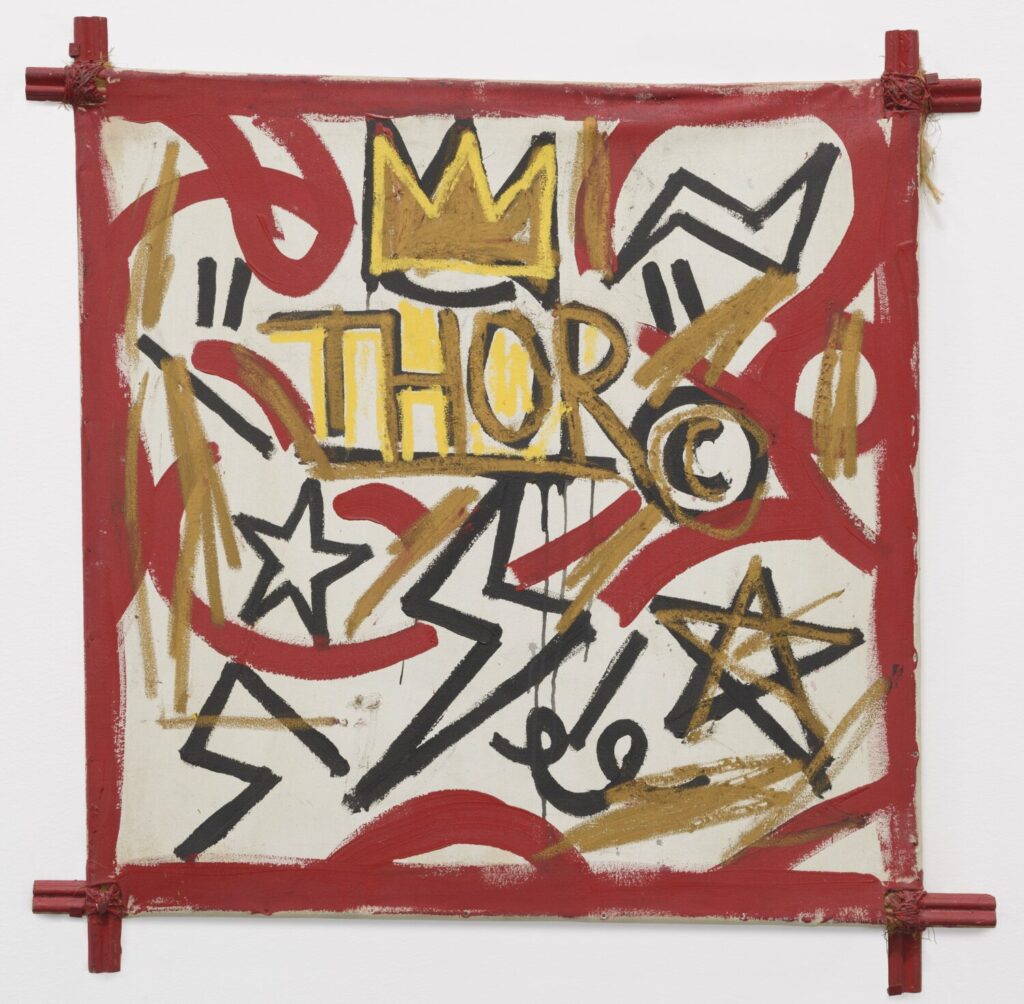
Untitled (Thor), 1982 (© The Estate of Jean-Michel Basquiat, Licensed by Artestar, New York)
The sisters definitely feel like they can see a broader influence of his time in L.A., in his work of that period and after. “He was a person who really connected himself to his environment,” says Jeanine. “So while he was here, it was really important to him to drive around and see what was going on, take photos, really immerse himself in restaurants and music and the culture of what was happening here.” Basquiat’s Hollywood paintings are some of the brightest and the darkest he ever made. Overall, he created about 100 works on those trips, exhibiting with Gagosian in Los Angeles soon after, and establishing relationships with culture figures from the Broads and other forward-thinking art collectors, to Dennis Hopper and the rest of the cool community of future all-star Venice artists, musicians, actors and impresarios.
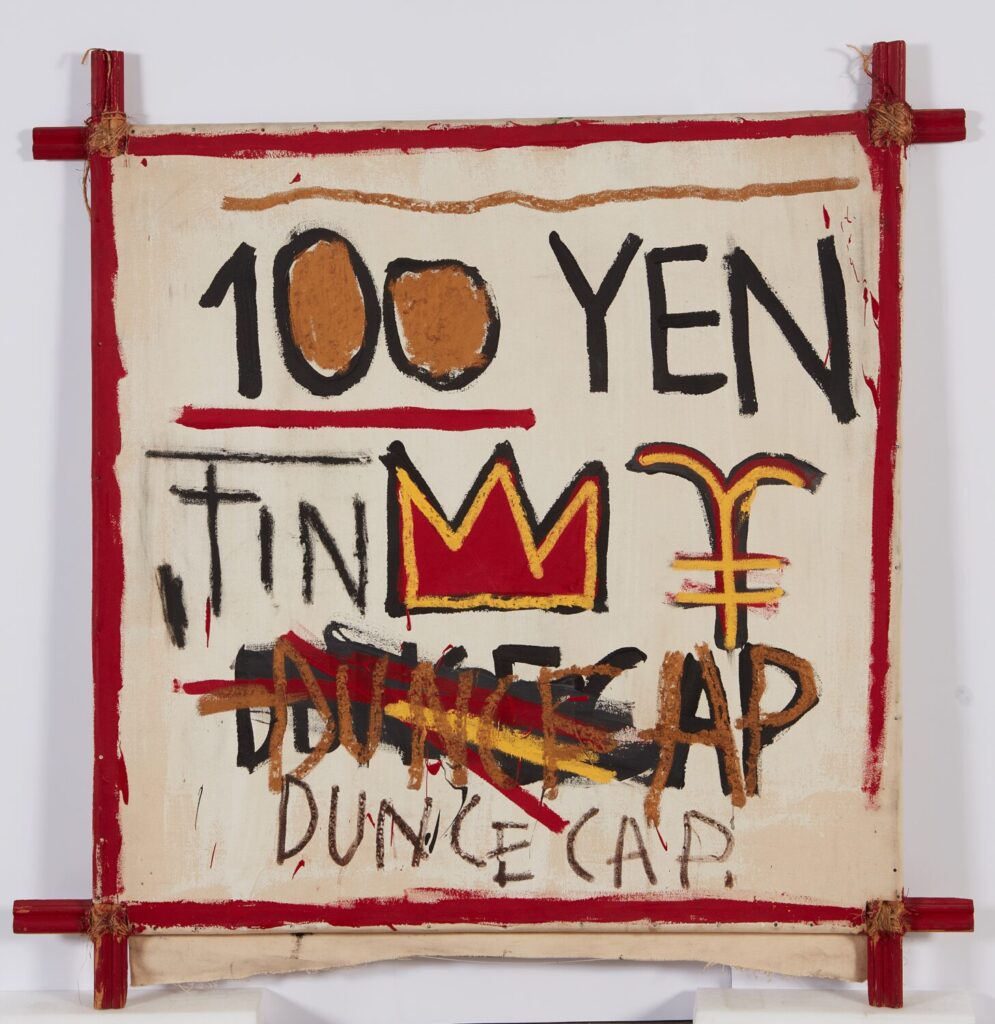
Untitled (100 Yen), 1982 (© The Estate of Jean-Michel Basquiat, Licensed by Artestar, New York)
“Now that we have created this exhibition and really wanting to weave that L.A. story in, after speaking to several people that were around him at the time, certain things started to pop up for us,” says Lisane. “We started to see certain things within what we read, within the notes and the ephemera that we have of his, within photographs that were taken around that time. It’s amazing what we’ve dug up and we still continue to learn.”
“It’s funny how we keep discovering new pieces of the puzzle, even after all these years,” says Jeanine. “It’s a testament to how complex and interconnected the art world can be. And I think that resonates with people. Art can be so intimidating and exclusive, but when you can connect with the human story behind it, it becomes much more accessible and meaningful.”
King Pleasure is now open downtown, and has been extended (again) through December 31, 2023, with more special events announced regularly. For more information visit: kingpleasure.basquiat.com.
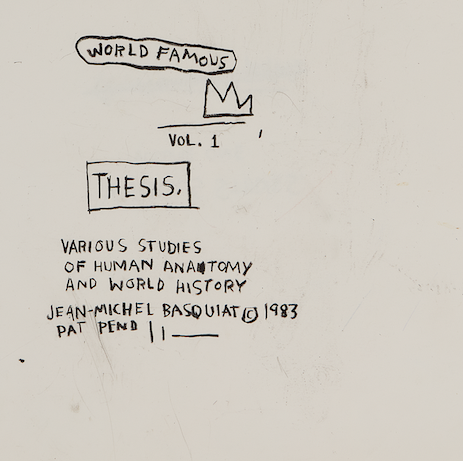
Untitled (World Famous Vol. 1. Thesis), Crayon on paper 22 1/2 x 30 inches, 1983 ( © The Estate of Jean-Michel Basquiat)
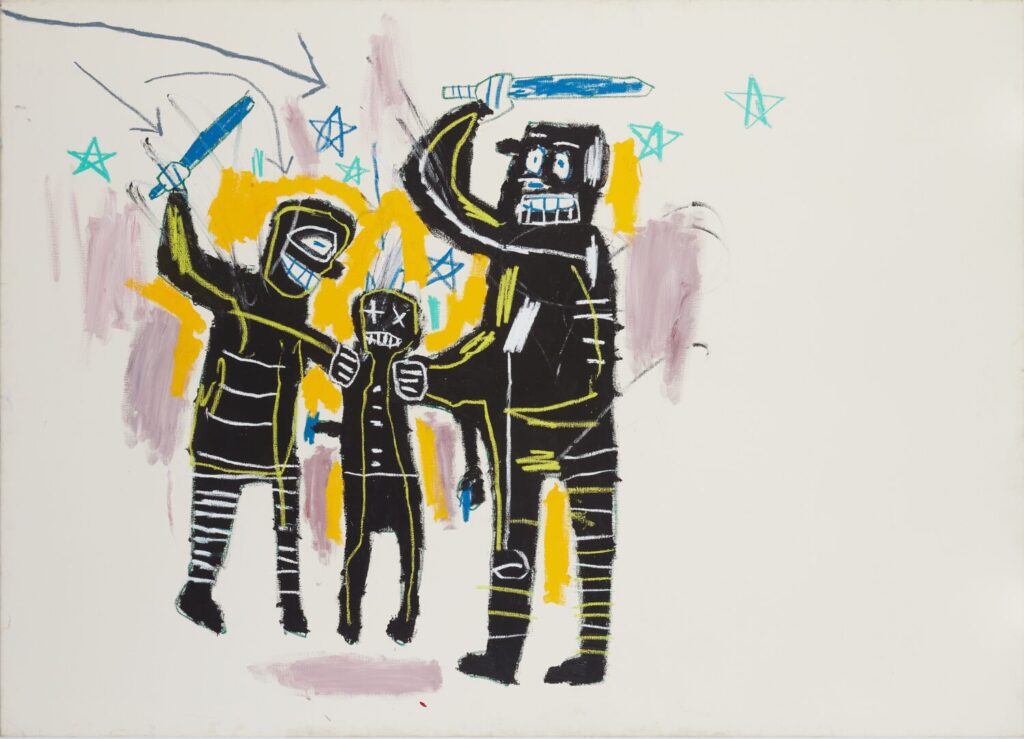
Jailbirds, 1983 (© The Estate of Jean-Michel Basquiat)
Editor’s note: The disclaimer below refers to advertising posts and does not apply to this or any other editorial stories.
Advertising disclosure: We may receive compensation for some of the links in our stories. Thank you for supporting LA Weekly and our advertisers.

